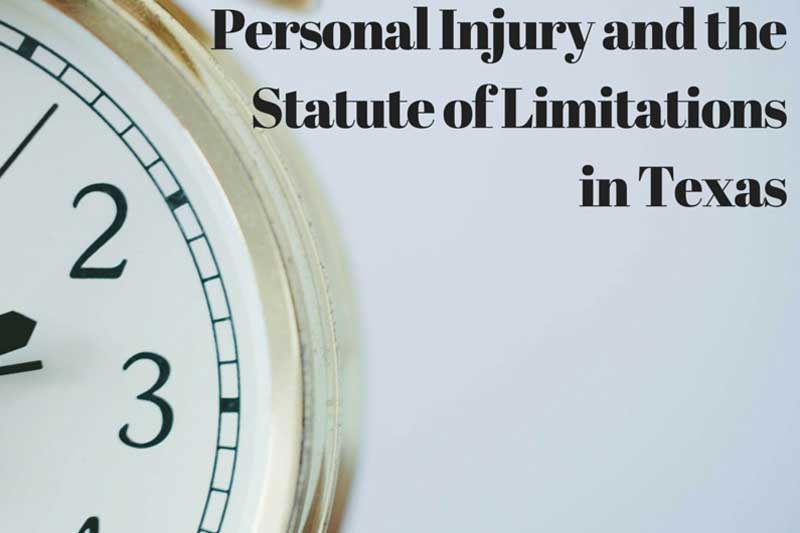Personal Injury and the Statute of Limitations in Texas

Tick, Tock
After you’ve been in an accident or suffered a personal injury, time can seem to stand still. People are so focused on dealing with their injuries, making sure their vehicles are repaired, and dealing with the paperwork from the insurance company that they often don’t get around to filing a lawsuit until it’s too late.
The time frame in which an individual is legally allowed to bring a suit to court is called the statute of limitations. For most personal injury claims (car accidents, wrongful death, medical malpractice, etc.) in Texas, this period lasts two years from the date of the incident that caused your injury. Certain exceptions do exist, but they are difficult to obtain, which means you’re likely out of luck after two years. Rather than taking your chances, you should contact an attorney as soon as possible following a personal injury incident to make sure you file a personal injury claim within the right timeframe.
Necessary Procedures
It’s important to understand that the statute of limitations begins on the day of the incident – not on the day you begin experiencing symptoms or the day you decide to visit a doctor (for yourself) or body shop (for your vehicle). The best thing you can do after being injured is to visit a doctor immediately, even if you don’t feel symptoms. Sometimes pain comes later, and you may have internal injuries you are unaware of initially. Also, if there are any damages to your property – like your vehicle – make sure to document them and contact an experienced attorney.
Two years may seem like plenty of time to pursue your lawsuit, but there is a lot that must be done in order to establish and advance your case. Before you file suit, an attorney needs to investigate your claim, document evidence, depose witnesses, and seek out various experts to testify on your behalf. Building your case can be quite time consuming, and there may end up being unexpected obstacles along the way. If you mismanage your time and bring your claim to the attention of a law firm too late, you may not even have the chance to get justice and compensation for your claim.
The Exceptions to the Rule
There are two key exceptions that pertain to the statute of limitations involving personal injury law in Texas. The first of these is known as “The Discovery Rule,” which applies to any injury that cannot be linked to a specific date. For instance, exposure to toxic chemicals could fall under this exception, as these damages usually occur gradually and without immediate signs or symptomology. However, in attempting to supersede the standard statute of limitations, the burden of proof is on the plaintiff to show a causal link without a distinct timeline.
Another exception to the Texas statute of limitations for personal injury is called “tolling.” Time limitations can be extended if the injured individual was a minor at the time of the incident occurred. When they turn 18, the standard two-year statute of limitations becomes active.
Naturally, there are exceptions to each of these exceptions, which means that you should always pursue your claim as early as possible and never depend on technical loopholes. Defense attorneys and insurance companies will do everything they can to impede your progress, so be sure to hire a skilled and experienced personal injury attorney to advocate on your behalf.
Hossley & Embry
If you feel that you or a loved one has suffered as a result of another party’s reckless, negligent, or even intentional behavior or actions, please give Hossley & Embry a call at (866) 522-9265 or send us an email at newcase@hossleyembry.com. We will be in touch promptly. We offer free consultations, and we have the resources available (including charter aircraft) to travel throughout Texas and the United States on short notice to investigate your potential claim.







